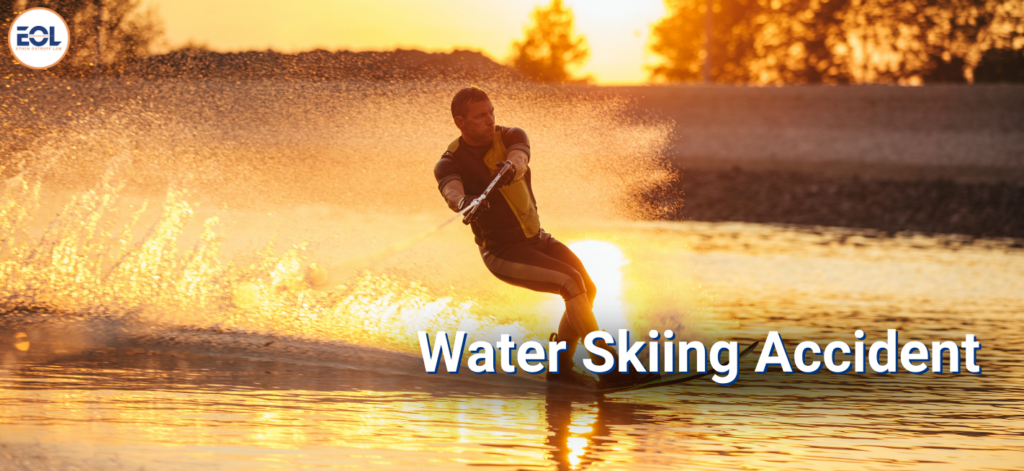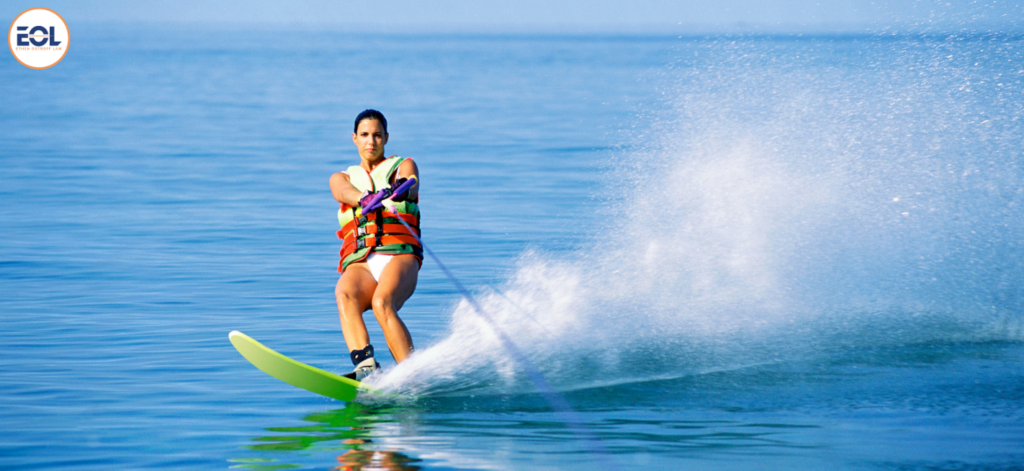Water Ski Accident Lawyer | Ethen Ostroff Law
Water skiing is a thrilling recreational activity that many individuals across the country enjoy. But accidents can occur during water skiing, leading to serious injuries and significant financial consequences. In this comprehensive guide, we delve into the legal aspects surrounding water skiing accidents, explore the process of pursuing compensation for injuries through a waterskiing accident lawsuit, and showcase how a water ski accident lawyer from Ethen Ostroff Law can assist you in obtaining justice and compensation.
The Thrill of Water Skiing
Millions of people all over the world adore water skiing. It brings together physical activity, social connections, and the joy of outdoor fun. Despite the emergence of new activities, water skiing remains a timeless way for Americans to experience nature’s beauty and the thrill of skimming across the water.
Top Water-Skiing Destinations in the US
Some of the top water-skiing destinations in the US include:
- Lake Havasu, Arizona: Offering over 450 miles of shoreline and popular for water skiing.
- Lake Michigan: Accessible from cities like Chicago and Milwaukee, providing numerous beaches and equipment rentals.
- Lake Norman, Charlotte, North Carolina: A water sports paradise with various activities including fishing, wakeboarding, and skiing.
- Lake Sammamish and Lake Washington, Seattle: Popular destinations known for excellent water-skiing conditions.
- Lake Tahoe, California/Nevada: Known for its stunning alpine scenery and comfortable water temperatures.
- Lake Texoma, Texas: Located at the confluence of the Washita and Red Rivers, offering great water sports opportunities.
- Orlando, Florida: Known for skiable waters, excellent weather, and top-notch skiing schools.
- West Palm Beach, Florida: With an average air temperature of 83 degrees, it’s a great spot for skiing.
These destinations provide a mix of scenic beauty, suitable water conditions, and amenities for an exciting water-skiing experience.

Types of Water Skiing
Water skiing offers a range of experiences for enthusiasts, with various types to suit different preferences and skill levels:
- Adaptive water skiing: It uses specialized equipment to enable participation, catering to those with disabilities.
- Barefoot skiing: Skiers glide without skis, using their feet at high speeds, requiring advanced balance and skill.
- Hydrofoiling: This modern style elevates skiers above the water using a hydrofoil board, providing a flying sensation with reduced drag.
- Jump skiing: Skiers use specially designed skis to launch off ramps, performing tricks or aiming for distance.
- Slalom skiing: Advanced skiers use a single ski to navigate buoys at high speeds, testing their control and agility.
- Traditional water skiing: Skiers are towed behind a boat on two skis, using a handlebar for balance.
- Trick skiing: Skiers perform various tricks and stunts on specialized skis, showcasing spins, flips, jumps, and balances.
- Wakeboarding: It involves riding a single board with bindings, combining elements of skiing, snowboarding, and surfing behind a boat.
Is Water Skiing Dangerous?
Water skiing holds an element of risk, as with any water sport. However, these risks can be minimized with caution and preparation. Collisions, falls, and equipment-related injuries are potential hazards. Enthusiasts can enjoy the activity safely by taking safety measures like wearing a life jacket, using well-maintained equipment, and following water skiing rules.
Types of Waters Skiing Accidents
Water skiing’s allure lies in its sense of freedom and outdoor fun with loved ones. Yet, like any high-speed water sport, it comes with risks. Here are common types of waterskiing accidents to be aware of:
- Collisions with another watercraft: Accidents can happen when boats or personal watercraft fail to notice skiers, leading to severe injuries like fractures or drowning.
- Falls from equipment failure: Defective or poorly maintained gear can lead to falls, causing injuries like sprains or head trauma.
- Falls from a loss of balance: Rough water or sudden turns can result in skiers losing balance, leading to injuries ranging from bruises to fractures.
- Hypothermia and cold-water immersion: Cold water exposure can cause hypothermia, impairing judgment and increasing accident risks.
- Inexperienced or reckless skiers: Lack of training or disregard for safety can lead to collisions or falls, endangering skiers and others.
- Overexertion and fatigue: Ignoring physical limits can result in muscle strain or exhaustion, heightening accident risks.
- Striking fixed objects: Misjudging distances or losing control can lead to collisions with objects like rocks or docks, causing serious injuries.
Common Causes of Water Skiing Accidents
Understanding the causes of water skiing accidents is key to promoting safety on the water. Here are some common factors:
- Alcohol or drug impairment: Skiing under the influence impairs judgment and coordination, raising accident risks.
- Equipment defects: Malfunctioning gear, like bindings or ropes, can cause falls or injuries.
- Inadequate training or instruction: Lack of proper training can lead to accidents due to unfamiliarity with safe practices.
- Inadequate boat or water ski maintenance: Poorly maintained boats or water skis increase accident risks.
- Lack of proper instruction or supervision: Insufficient guidance can lead to accidents, especially for inexperienced skiers.
- Operator negligence: Negligent boat handling, like towing skiers into dangerous wakes or ignoring safety guidelines or surroundings, can result in collisions or accidents.
- Tour guide or excursion leader negligence: Failure to ensure safety during guided tours can lead to accidents.
- Water skiing in shallow water or near hazards: Water skiing in shallow areas or near hazards increases the chances of accidents during water sports.
- Water skiing while distracted: Not paying attention to hazards or other participants can lead to accidents.

What Is the Most Common Injury in Water Skiing?
Water skiing accidents can lead to various injuries, from minor cuts to severe trauma. Here are the common ones:
- Drowning: In severe cases, accidents can result in drowning if a skier can’t resurface or receive timely help.
- Fractures: High-impact falls or collisions can cause broken bones, like wrist or leg fractures.
- Head injuries: Falls can lead to concussions or other head injuries, requiring prompt medical attention.
- Lacerations and abrasions: Contact with objects in the water can cause cuts or scrapes, needing medical treatment to prevent infection.
- Soft tissue injuries: Impact with the water’s surface or objects can damage muscles or ligaments, causing pain and swelling.
- Spinal cord injuries: High-impact falls or collisions can damage the spinal cord, resulting in paralysis or neurological deficits.
- Sprains and strains: Sudden movements or impacts can lead to sprains or strains, often affecting ankles or wrists.
- Wrongful death: In severe cases, accidents can result in fatalities, necessitating legal action for surviving family members.
Understanding potential injuries and taking precautions can help minimize risks while enjoying water skiing.
Ways to Prevent Water Skiing Accidents and Injuries
To prevent water skiing accidents and injuries, consider these measures:
- Avoid alcohol or drug impairment: Stay sober while operating boats or skiing to maintain clear judgment and coordination.
- Be mindful of fatigue: Take breaks to prevent overexertion and maintain alertness.
- Be aware of surroundings: Stay vigilant to avoid collisions and obstacles in the water.
- Check weather conditions: Avoid adverse weather conditions like storms or poor visibility.
- Communicate with boat operators: Establish clear communication to convey intentions and address concerns.
- Follow safety guidelines: Adhere to safety rules and always have a spotter on the boat.
- Know your limits: Progress cautiously and avoid pushing beyond your skill level.
- Maintain equipment: Regularly inspect and replace worn-out or damaged gear.
- Maintain proper technique: Release the tow rope properly to prevent injuries.
- Obtain proper training: Learn from qualified instructors to acquire the necessary skills and safety knowledge.
- Practice safe speed and distance: Control speed and maintain distance from hazards.
- Warm up and stretch: Prepare muscles to minimize strains and sprains.
- Stay informed about water conditions: Be aware of hazards and currents.
- Stay hydrated: Prevent cramps and strains by staying hydrated.
- Wear protective gear: Use a helmet, gloves, wetsuit, life jacket, and other safety equipment.
Things to Do Right After a Waterskiing Accident
If you’re in a waterskiing accident, prioritize safety with these steps:
- Assess the situation: Stay calm and check for injuries, signaling for help if needed.
- Signal for help: Use whistles, calls, or hand signals to attract attention from nearby boats or bystanders.
- Move to safety: If possible, move to a safe spot away from the water’s path to prevent further accidents.
- Provide first aid: Administer first aid if trained, addressing bleeding wounds and immobilizing fractures.
- Contact emergency services: For serious accidents, call emergency services and provide details of the situation.
- Gather information: Collect the names, contacts, and details of witnesses and parties involved in the accident.
- Report the waterskiing accident: Follow local regulations and report the incident to relevant authorities if necessary.
- Document the incident: Take photos of the scene, injuries, and equipment damage for insurance or legal purposes.
- Seek medical evaluation: Even for minor injuries, seek medical evaluation to address potential hidden injuries.
- Consult a personal injury lawyer: Consider consulting a water ski accident lawyer, especially for severe accidents, to understand legal options and seek compensation.
Waterskiing Accident Laws in Pennsylvania
Waterskiing accident laws in Pennsylvania are shaped by state statutes, regulations, and legal principles. Here are key points to consider:
- Assumption of risk: Defendants may argue that the injured party accepted the inherent risks of water skiing, affecting liability.
- Comparative negligence: Pennsylvania applies comparative negligence, meaning damages may be reduced if the plaintiff shares fault.
- Negligence law: Water skiing accidents involve proving negligence, including duty of care, breach, and causation.
- Statute of limitations: Typically, you have two years from the accident date to file a claim, so act promptly.
- Watercraft regulations: Pennsylvania regulates watercraft operations, impacting liability with rules on speed limits, right of way, and equipment requirements.
For tailored legal guidance, consulting a Pennsylvania water ski accident lawyer is essential for your waterskiing accident case.
Steps to Take When Negligence Results in Water Skiing Injuries
When negligence leads to water skiing injuries, it’s crucial to act promptly and protect your rights. Here’s what to do:
- Ensure safety: Seek immediate medical attention and move to a safe area to prevent further harm.
- Document the incident: Take photos of the accident scene and injuries, noting relevant details like weather conditions.
- Report the incident: Inform authorities and file a waterskiing accident report as required by local regulations.
- Seek medical evaluation: Get a thorough medical examination to document your injuries for legal purposes.
- Preserve evidence: Keep records of medical bills and treatment plans, as well as any other relevant documents.
- Consult a water ski accident lawyer: Contact a water ski accident lawyer from Ethen Ostroff Law to evaluate your case and advise you on legal options.
- Consider insurance claims: Notify your insurance provider and file a claim for compensation for medical expenses and other damages covered under your policy.
- Negotiate or litigate: Work with your water ski accident lawyer to negotiate a settlement or pursue legal action through litigation if necessary.
- Follow legal guidance: Adhere to your attorney’s advice throughout the legal process, including attending court proceedings.
- Focus on recovery: Prioritize your physical and emotional well-being while pursuing legal recourse.
By following these steps and seeking guidance from a qualified attorney, you can seek appropriate compensation for water skiing injuries caused by negligence.
Legal Avenues for Water Skiing Accidents Caused by Negligence
When negligence causes water skiing accidents, victims have several legal avenues to pursue compensation for their injuries and losses:
- Boating regulations violations: Violations of boating regulations or maritime laws, such as operating a boat under the influence or speeding, can strengthen a victim’s case and may result in punitive damages.
- Insurance claims: Victims can file insurance claims to cover medical bills, lost wages, and other damages under policies like health, homeowners, or boating insurance.
- Negligence claims: Victims can pursue compensation for various damages by proving negligence of boat operators, instructors, or equipment manufacturers.
- Personal injury lawsuit: Victims can file a waterskiing accident lawsuit against negligent parties, proving breach of duty of care and direct causation of injuries, to seek compensation for damages.
- Premises liability claims: Property owners may be liable for injuries sustained on their premises due to negligence in maintaining safe conditions.
- Product liability lawsuits: Defective water-skiing equipment may lead to product liability claims against manufacturers, distributors, or sellers for injuries caused by their products.
- Settlement negotiations: Parties may negotiate a settlement before trial to expedite compensation without litigation.

Determining Responsibility in Water Skiing Accidents
Determining responsibility in a waterskiing accident involves a thorough assessment of these factors:
- Investigation of the waterskiing accident: Gathering witness statements, reviewing accident reports, and examining evidence like photos or videos help understand what happened.
- Evaluation of negligence: Assessing if any party breached their duty of care, such as the boat operator’s actions or the skier’s adherence to safety guidelines.
- Analysis of boating regulations: Considering if any violations of boating laws occurred, like operating a vessel under the influence of alcohol.
- Assessment of equipment failure: Examining if equipment malfunctions or defects contributed to the accident, such as a defective ski rope.
- Review of contributory factors: Considering weather conditions, visibility, and water hazards to determine if appropriate precautions were taken.
- Legal expertise: Seeking guidance from an Ethen Ostroff Law water ski accident lawyer can help navigate legal complexities and advocate for the injured party.
Careful evaluation of these factors with legal experts allows for appropriate legal action and compensation for the injured party.
Potential Liable Parties for Water Skiing Accidents
Potential parties who may be held responsible for water skiing accidents include:
- Boat operators: Operators are responsible for safely navigating vessels and following water-skiing regulations. Negligence, like not maintaining a proper lookout or yielding, can make them liable for accidents.
- Equipment manufacturers: If accidents result from equipment defects, such as faulty bindings or skis, the manufacturer may be liable for injuries caused by the defect.
- Other skiers: Reckless behavior or failure to follow safety guidelines by other skiers leading to collisions or injuries can hold them responsible for their actions.
- Rental companies: Rental companies are obligated to provide safe and well-maintained equipment. If they fail to do so, resulting in an accident, they may be liable for injuries.
- Watercraft owners: Owners of vessels used for towing skiers can be held accountable if negligence in maintaining the vessel or providing proper equipment contributes to accidents.
Proving Negligence
To prove negligence in water skiing accident cases, consider these key elements:
- Duty of care: Show that the defendant owed a duty of care to the injured party, inherent in activities like water skiing, operating watercraft, or providing equipment.
- Breach of duty: Demonstrate that the defendant failed to fulfill their duty of care. This could involve ignoring safety guidelines, recklessly operating watercraft, or supplying faulty equipment.
- Causation: Establish a clear connection between the defendant’s breach of duty and the accident. It must be evident that their actions or negligence directly caused or significantly contributed to the injuries sustained.
- Damages: Provide evidence of the actual damages resulting from the accident. This helps quantify the harm caused by negligence.
Filing a Waterskiing Accident Lawsuit
To file a waterskiing accident lawsuit, follow these steps and work closely with your water ski accident lawyer:
- Consultation with an attorney for case evaluation: Schedule a meeting with a water ski accident lawyer to assess your case, including the accident details and your injuries.
- Gathering evidence: Collaborate with your attorney to collect evidence like accident reports, witness statements, and medical records.
- Drafting the complaint: Your water ski accident lawyer will prepare a formal complaint outlining the allegations and damages sought.
- Filing the waterskiing accident lawsuit: The complaint is filed with the appropriate court, initiating legal proceedings.
- Service of process: The defendant(s) must be formally served with the complaint and summons.
- Discovery phase: Both parties exchange relevant information through depositions and document requests.
- Settlement negotiations: Parties may attempt to settle the case through negotiation or mediation.
- Pretrial motions: Pretrial motions, such as dismissal or summary judgment motions, may be filed.
- Trial: If not settled, the case proceeds to trial, where evidence is presented before a judge and/or jury.
- Post-trial motions and appeals: Either party may file post-trial motions or appeals if dissatisfied with the outcome.
- Enforcement of judgment: If successful, you can enforce the judgment to collect compensation for your injuries.
Compensation in Waterskiing Accident Lawsuit
In a waterskiing accident lawsuit, compensation may be awarded for various damages incurred because of the accident:
- Loss of consortium.
- Lost wages and income.
- Medical expenses.
- Pain and suffering.
- Permanent disabilities, impairments, or disfigurements.
- Property damage.
- Punitive damages.
The amount of compensation is based on numerous factors, including:
- Impact on the victim’s life.
- Level of negligence or liability of the parties involved.
- Severity of the injuries.
Ethen Ostroff Law | Water Ski Accident Lawyer
When it comes to water skiing accidents, seeking the right legal representation is crucial. Whether you’re a victim seeking compensation for your injuries or facing a legal challenge as a responsible party, having a water ski accident lawyer on your side can make all the difference. At Ethen Ostroff Law, we offer personalized attention, expertise in waterskiing accident cases, and a results-driven approach to help you navigate the legal process and achieve the best possible outcome.
What are you waiting for? Contact Ethen Ostroff Law now at 610-510-8883 ( by calling this number, you consent to receive SMS updates from Ethen Ostroff Law) or Submit Form to get free consultation.


